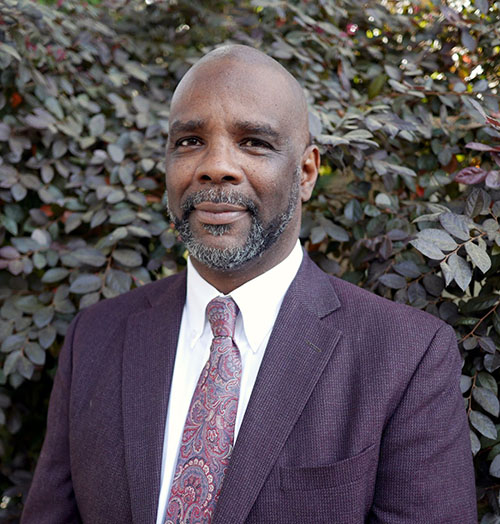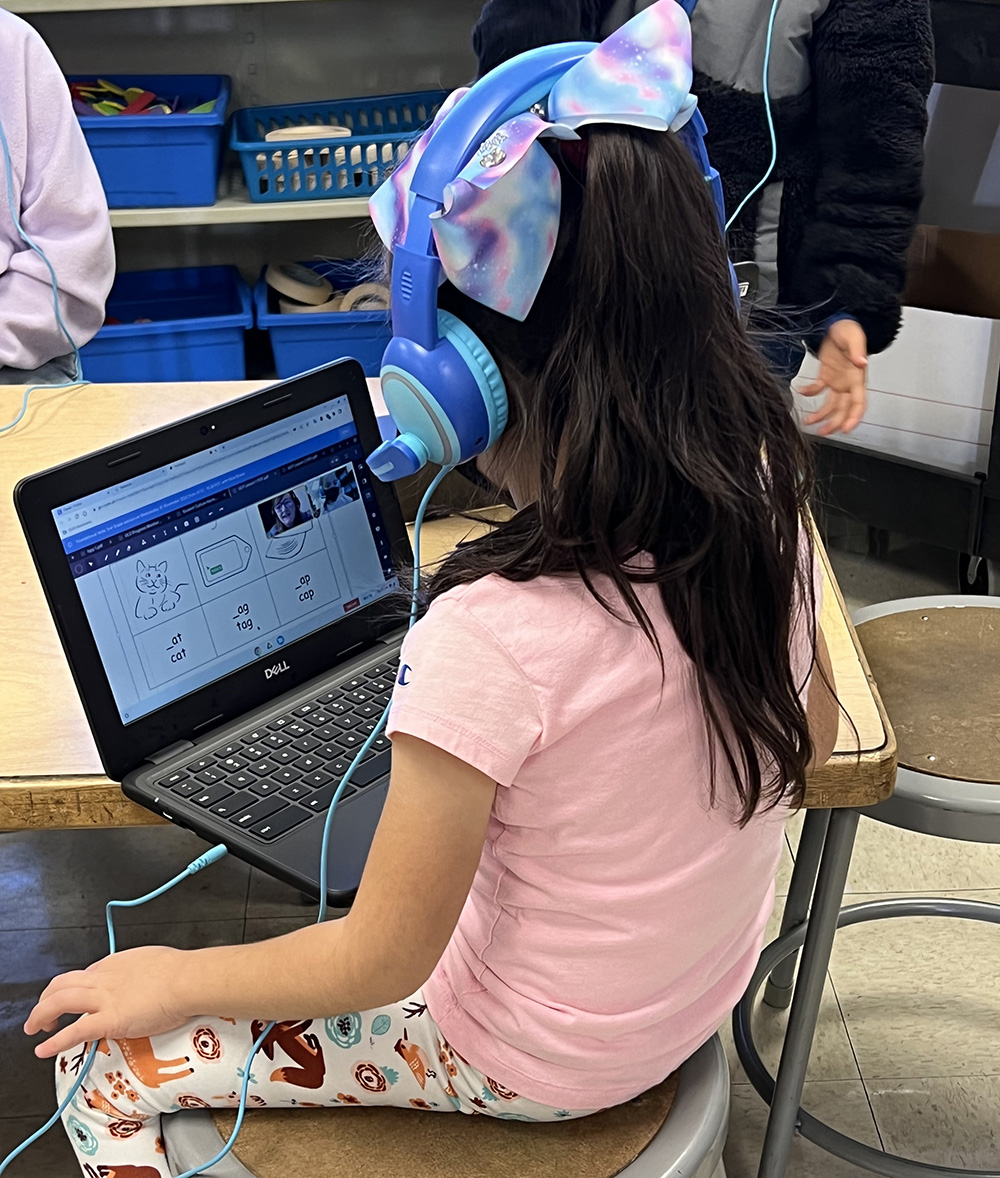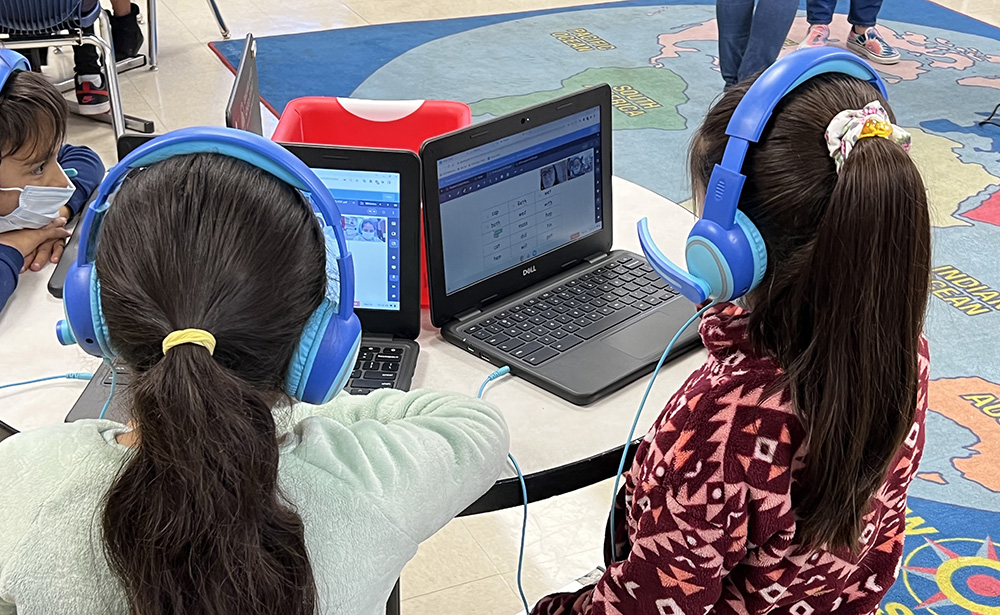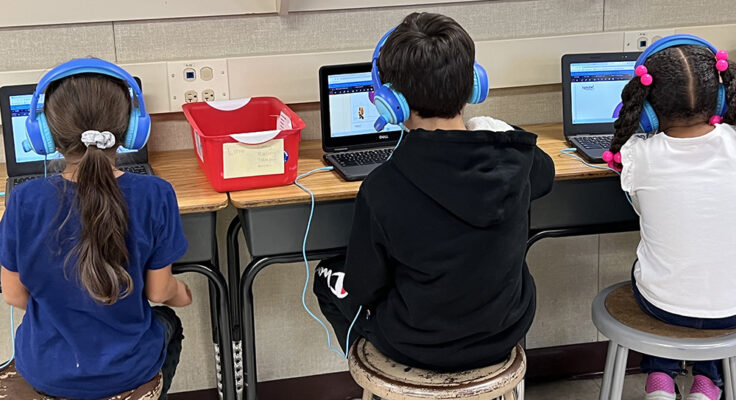FULCRUM and Ignite! Reading are showing the power of what’s possible when Oakland children get equitable access to evidence-based learning and supports. Their partnership, formed during the pandemic, is guided by a shared belief: that every child deserves the right to learn to read. Before the COVID-19 pandemic, and still today, only one in three Oakland children achieve their potential of reading proficiently by third grade.
Motivated by an understanding of Oakland’s literacy gaps and the science of reading, FULCRUM has embarked on a mission to do something, and has focused on Ignite! Reading as a strong partner. Through Ignite! Reading students receive 15 minutes of virtual, one-on-one tutoring from the same highly trained tutor every day. The program was designed to minimize the burden on teachers so that it can be easily implemented during the school day and begin having an immediate impact. The student results are promising. The program more than doubles the foundational skills reading growth expected for children in traditional classroom settings. This growth is experienced across socio-economic and racial demographics.
This partnership has the power to transform the status quo and eradicate illiteracy. I spoke with Kareem Weaver, co-founder and Executive Director of FULCRUM, and Jessica Reid Sliwerski, co-founder and CEO of Ignite! Reading, about how they are creating more equity by tackling the literacy gap in Oakland schools. Highlights of the conversation are below.
How do your organizations work together to help children learn to read?

Jessica Sliwerski: Ignite! Reading is proving what’s possible when kids are given equitable access to learning and are paired with a highly trained tutor-educator. Our program gives Kareem a bright spot to point to showing it’s possible for kids to learn how to read. There is nothing wrong with the kids, but school systems rely on untrue narratives to excuse abysmal literacy results, especially for Black and Brown kids. Our program is evidence that when given equitable access to consistent, high-quality, evidence-based instruction, kids can learn to read at really high levels of achievement.
Kareem Weaver: At FULCRUM, we’re trying to get the kids to read. That’s the bottom line. Ignite! Reading is doing that work. We’re shining a light on them and pointing people—school board members or staff, parent groups, media, civil rights organizations—in their direction. And we want to cut through the untrue narratives.
Jessica: When you don’t have examples of what’s possible, it makes it easier to justify your own narrative. I understand teaching and learning and how to build a program that can scale nationally to get results for kids. So as Kareem and FULCRUM are advocating for all kids—and especially Black kids—to get equitable access to learn to read, there is this safety net for kids. Fortunately, there are folks who have the humility to “know better, do better,” and are bringing Ignite! Reading into their schools. As more and more of those people surface, largely because of Kareem’s work at the national level with his advocacy and platform on the science of reading, our hope is that more people, especially in Oakland, can have this moment of realizing it is about the kids. It’s not about adults and our egos or our desire to maintain power. It’s about serving children, and let’s start with that at the forefront. If we could do that, education would look a lot different.
“Our program is evidence that when given equitable access to consistent, high-quality, evidence-based instruction, kids can learn to read at really high levels of achievement.”
Jessica Reid Sliwerski, Ignite! Reading
What motivated you to recommend Ignite! Reading as a literacy safety net?

Kareem: I’ve heard a lot of rosy promises and great intentions; I’ve read strategic plans from districts all over California—beautiful words and well-crafted mission statements; I’ve seen it all. But the kids still can’t read. At FULCRUM, we see Ignite! Reading as the best of two worlds: it can give a safety net and support to kids while there is a season of learning for teachers. I’m seeing kids learn to read. I’m seeing Ignite! Reading helping with things that haven’t previously been prioritized.
There are so many things that can go wrong in a tutoring initiative; you’ve got to find, vet, recruit and hire the tutors. Then you have to train them, support, manage and schedule them. Heaven forbid they miss a day. As such, Oakland has worked tirelessly to fill its tutoring roles. It has gotten better, and we’re close to 100% filled…but it’s March. We need a safety net that is fully ready to go from day one.
Ignite! Reading does the hiring, training, scheduling—they figure all that out. You just need computers set up, the kids identified, principals and teachers who are open to the support, and then fund it and let it go. We work with Ignite! Reading and teachers to get kids the help they need and provide teachers with the safety net to support their efforts.
“We see Ignite! Reading as the best of two worlds: it can give a safety net and support to kids while there is a season of learning for teachers. I’m seeing kids learn to read. I’m seeing Ignite! Reading helping with things that haven’t previously been prioritized.”
Kareem Weaver, FULCRUM
Tell me about your work and successes at Korematsu Discovery Academy?

Jessica: Korematsu is facing a unique set of circumstances because OUSD had slated it to close. It’s heartening that, despite the impending closure, school leaders committed to this innovative literacy partnership to give kids the best possible opportunities through Korematsu’s final days of operation. Korematsu is a vibrant place full of happy kids who are learning. Students who show up for Ignite! Reading programming every day get high-quality instruction grounded in the science of reading. Hearing the kids talk about their experience in the program—they’re all excited to be there. They get there early, they’re chit-chatting with each other and curious about the adults in the room. And the moment that their tutor pops up on the screen, they’re completely engaged.
Our results at Korematsu are on track with what we see nationally in Ignite! Reading. On average kids are outpacing what we would expect from typical classroom instruction at about 2.4 times the rate. What Ignite! Reading can do in a one-on-one session just isn’t possible in a classroom setting where you have one teacher and 25 to 30 kids.
“On average kids are outpacing what we would expect from typical classroom instruction at about 2.4 times the rate. What Ignite! Reading can do in a one-on-one session just isn’t possible in a classroom setting where you have one teacher and 25 to 30 kids.”
Jessica Reid Sliwerski, Ignite! Reading
How do you know your work is having a positive impact?

Jessica: The data points show that Ignite! Reading is working and having a positive impact on students in Oakland and across the country. Ignite Reading’s latest pilot results show that our programming reversed pandemic-related learning losses and doubled the reading growth expected from traditional classroom settings. For every one week in the program, students made an average of 2.4 weeks of reading progress. Sixty-eight percent of students made at least two weeks of reading progress for every week they were in the program; 28% of students made three or more weeks of reading progress per week. And there were no racial achievement gaps among our results; students of color made the same progress as white students. Similarly, multilingual learners, special education students and students from low-income backgrounds made the same progress as their peers.
“…there were no racial achievement gaps among our results; students of color made the same progress as white students. Similarly, multilingual learners, special education students and students from low-income backgrounds made the same progress as their peers.”
Jessica Reid Sliwerski, Ignite! Reading
Kareem: Last March, FULCRUM took a group to see Ignite! Reading in action. They set us up in a side room to observe kids being tutored. While one little girl read a paragraph, the principal and teachers began to cry. I wondered, “What’s going on with these over-emotional people?” I really was cynical about it. Well, when the session was over, they told me, “This third-grade girl came to school in January for the first time, completely illiterate.” She didn’t know her ABC’s, and here she is three months later reading a paragraph, so the educators were in tears. It showed the power of what’s possible for our kids if they get the supports they need. And it’s also a testament to the unimaginable circumstances and challenges facing our educators.
This third grader’s story is one example, but we have examples like this all around town that show how this programming can ensure that we catch students and keep them out of the school-to-prison pipeline.
“We have examples like this all around town that show how this programming can ensure that we catch students and keep them out of the school-to-prison pipeline.”
Kareem Weaver, FULCRUM
What are your dreams for the future?

Jessica: Ignite! Reading’s vision is a world in which all kids learn to read on time, which we define as by the end of first grade. My dream is that we have a world in which public education does the thing it’s supposed to do, which is to educate all of our children, not just the ones who happen to win the birth lottery and come from high socio-economic status families who send their kids to schools with PTAs that raise millions of dollars and can hire extra people to teach kids to read, but every single kid in our country, regardless of socio-economic status, is learning to read by the end of first grade.

